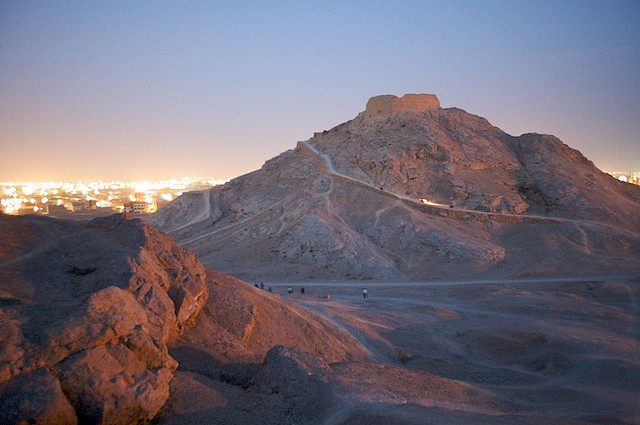UNTIL 40 YEARS AGO, CORPSES could still be found on top of the Towers of Silence in Yazd, Iran, slowly disintegrating or being picked apart by desert vultures.
In the Zoroastrian tradition, once someone has died, their body can immediately be contaminated by demons and made impure. To prevent this infiltration, Zoroastrians purified the dead body by exposing it to the elements and local fowl on top of flat-topped towers called dakhmas in the desert.
According to a tradition dating back over 3,000 years, bodies were arranged on the towers in three concentric circles. Men were placed in the outer circle, women in the middle, and children in the inner-most ring. The bodies were then left until their bones were bleached by the elements and stripped by the vultures.
After the purification process, the bones were placed in ossuaries near or inside of the towers. Ossuaries from these rituals have been discovered from the fourth and fifth centuries BC. Similar dakhmas exist just outside of Mumbai, India, as well, although the most prominent “Towers of Silence” are in Iran.
As Iran developed and urbanized, dakhmas became increasingly closer to city limits, severely curtailing their use. Since the 1970s, the use of dakhmas has been illegal in Iran, forcing orthodox Zoroastrians to adapt to new burial methods. Many in the Zoroastrian community have moved to burying bodies beneath concrete to keep out all contaminants.





